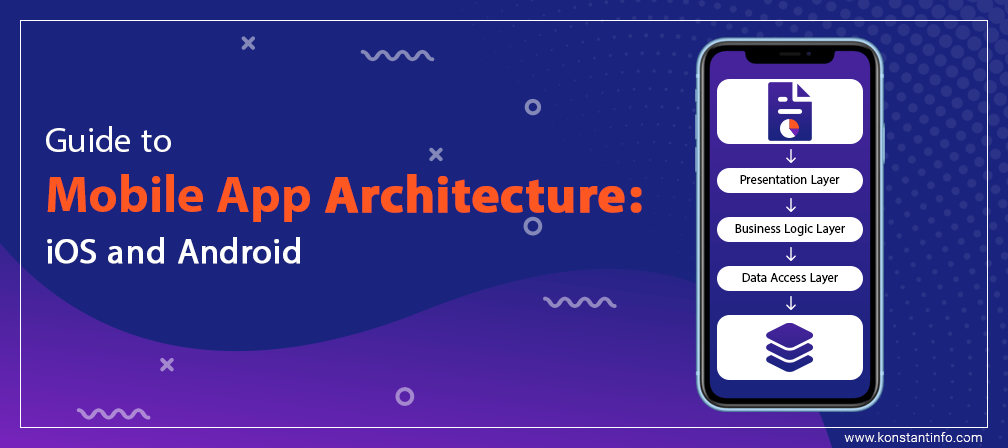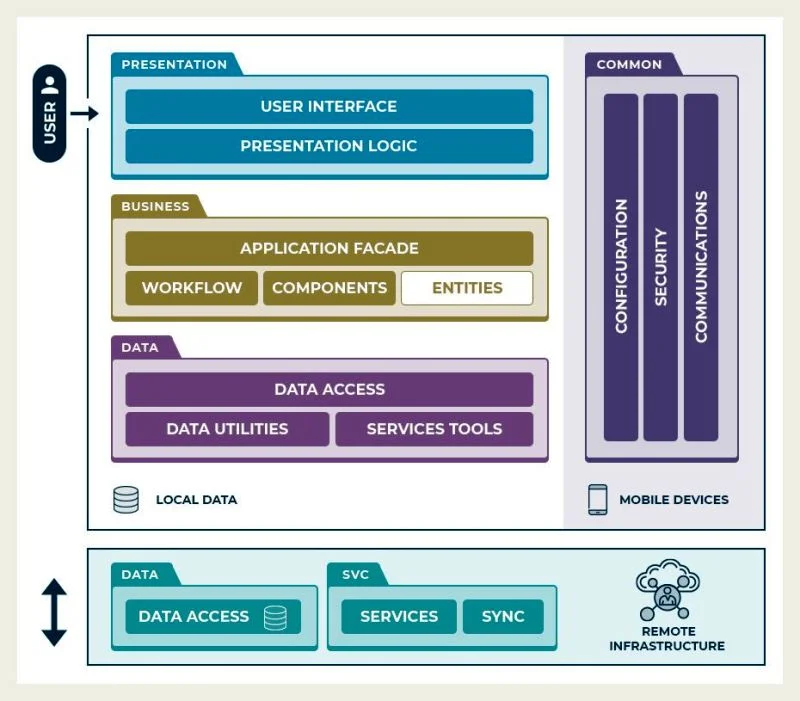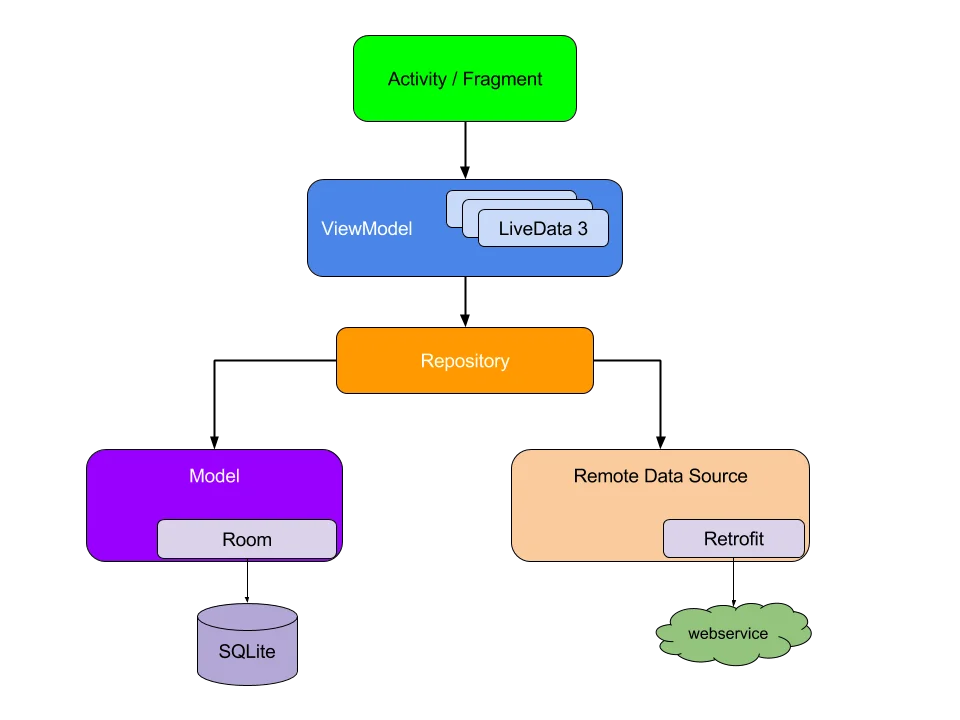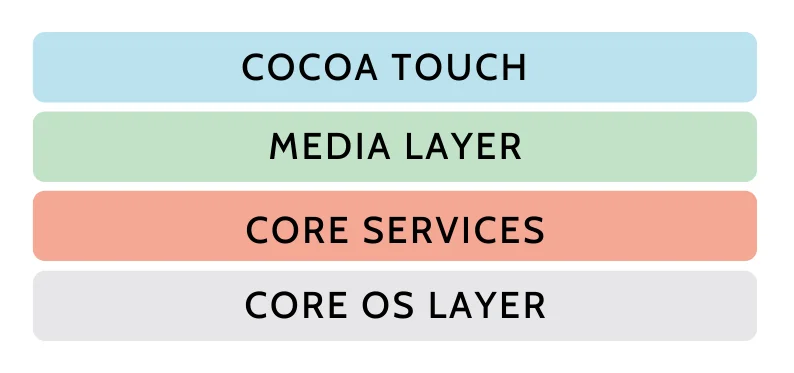
Finding a suitable mobile app architecture has always been difficult as it has to be scoped with the nature of the application to be built. It tells us if the things are going in the right direction and if there is a need of improvement; helps establish guidelines, constraints and patterns according to which the code grows. Besides complementing the software, the right architecture handles various problems with the mobile operating system. Android developers might feel a lack of support from Google or no particular recommendation for architecture while iPhone developers might feel it contradictory to make use of MVC architecture for UIKit. This proposal might arouse a lot of controversies and might not suit well to all the developers.
Mobile application architecture is a set of techniques and patterns that are required to develop completely functional mobile app with industry standards and vendor requirements.
Mobile application architecture design generally consists of multiple layers, including:

Global app store consumer spend is estimated to reach $120 billion by the end of 2019, according to mobile data and analytics provider App Annie.
Gaming apps account for almost 74% of the global consumer spending while non-gaming apps account for the rest. Android and iOS being the two most prevalent OS, account for very different ecosystems and app architecture. Android and iOS development are difficult in terms of demographics (age, profession, location of users), development process, market, audience, tools used, media engagement diversity (contrary to popular belief, iOS users engage with all types of contents and media more than Android users do).
It might seem like an easy decision to select, but although Android users may be less attractive to all types of media categories, it isn’t that easy as Android users far outweigh iOS users in number. This might be a challenge for developers. In such a case, the nature of the app could act as a decisive factor. Also, the way around in which a developer decides upon their monetization policy (to make money from the app) is an important point that could potentially help to choose the target audience.
Along with this, user satisfaction also plays an important role as it helps predict the future of the platform. An increasing number of people are involved in m-commerce (mobile shopping). Besides, implementation of most prevalent monetization strategies like paid apps, ads and IAP’s, iOS has a clear advantage over Android audience. Programming languages, development tools and cost of development are additional factors that give a certain advantage to a particular platform.
Both iOS and Android architecture are similar in principle but differ in execution. Respective architecture clarifies how their apps function. Largely, Android architecture is perceived to be open as compared to iOS. Android adopts a Linux kernel, whereas iOS opts a BSD-derived kernel called Darwin. Both Android, as well as iOS, are Unix based, start with a kernel, controlling hardware at its core, along with timing, file system, drivers, interrupts and power management.

Android Architecture
iOS architecture seems more customized as compared to Android architecture as it is programmed for security. Apple creates all the libraries from scratch and makes use of personalized BSD based kernel. On the other hand, Android users a lot of open-source software. As widely perceived it might not be as useful for the mobile phones as for the laptops with every part in it built by the same manufacturer or particularly useful while building your computer, making use of the shelf parts and using a custom case to put it in.

iOS Architecture
Both Android, as well as iOS operating systems, offer respective advantages and disadvantages, which forces developers to narrow down their focus towards the target market. As app become increasingly complex, the development teams are super charged to deliver faster results in the face of changing requirements and increasing competition. This calls for the requirement to have good mobile application architecture practices in projects. As the decision to adopt a particular architecture also depends upon organizational and functional requirements, follow our developers in case you wish to create a mobile application with trending architecture approach!



Neeti Kotia is a technology journalist who seeks to analyze the advancements and developments in technology that affect our everyday lives. Her articles primarily focus upon the business, social, cultural, and entertainment side of the technology sector.
Or send us an email at: [email protected]